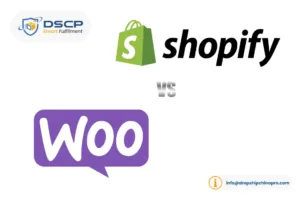In today’s fast-paced business environment, navigating supply chain complexities can be quite the challenge, especially when you’re aiming to stay lean and agile. This is where Third-Party Logistics (3PL) provider come into play. These partners handle logistics operations like warehousing, transportation, and distribution, allowing businesses like yours to focus more on core activities and less on logistical headaches.
But here’s the million-dollar question: is hiring a 3PL logistics provider worth the investment for your business? In this post, we’ll dive deep into the costs and benefits of outsourcing your logistics needs. Our goal is to help you make an informed decision, considering not just the financial angle but also how it aligns with your business’s long-term strategies. Let’s explore whether a 3PL provider could be your ticket to smoother operations and enhanced profitability.
Understanding 3PL Services
Definition of 3PL
Third-Party Logistics (3PL) providers are specialized companies that take over the logistics and supply chain management operations for other businesses. These providers are experts in managing everything from warehousing and transportation to order fulfillment, allowing businesses to focus on their core competencies without the burden of logistical complexities.
Core Services Offered by 3PL Providers
- Warehousing: 3PL providers manage extensive warehousing networks that enable businesses to store their products efficiently. These services include not only the physical storage of goods but also inventory management and control systems that ensure products are well-organized, easily accessible, and accounted for accurately.
- Transportation: Effective transportation management is crucial for timely delivery and cost control. 3PL providers manage the entire process, from scheduling and route optimization to carrier negotiations and freight auditing. This comprehensive management helps in reducing overheads and improving delivery speeds.
- Distribution: From receiving orders to packaging and shipping, 3PLs streamline the entire distribution process. They ensure that products reach the end customer through the most efficient and reliable means, often enhancing customer satisfaction through professional handling and timely delivery.
- Value-added services: Beyond the basics, 3PLs often offer services that enhance product value such as assembly, packaging design, kitting (combining multiple items into one package for shipment), labeling, and even handling returns (reverse logistics). These services help businesses provide a better customer experience and adapt to complex market demands.
Types of 3PL Logistics Providers

- Standard Warehousing & Distribution: These providers offer fundamental services like storage and transportation, focusing on the efficient and effective movement and holding of goods. Ideal for businesses looking for straightforward logistics solutions without specialized requirements.
- Specialized Services: Some 3PLs specialize in specific sectors like pharmaceuticals, automotive, or perishable goods, addressing unique challenges such as temperature control, secure transport, or regulatory compliance. These providers are equipped with the expertise and technology needed to handle sensitive products under strict industry standards.
- Custom/Integrated Solutions: For businesses requiring a more tailored approach, some 3PL providers offer custom solutions that integrate deeply with their internal operations. These services can include end-to-end logistics management, custom reporting, and dedicated support, designed to fit seamlessly with existing business processes.
Each type of 3PL provider offers distinct advantages, and the choice largely depends on the specific needs and complexity of a business’s logistics requirements. Whether you need basic warehousing solutions or a specialized logistics partner, understanding these options can significantly impact your operational efficiency and bottom line.
Technology and 3PL
- Inventory Management Systems (IMS): 3PL providers leverage advanced IMS to optimize inventory tracking and management. These systems enable real-time tracking of stock levels, automated reorder points, and detailed reports on inventory status, helping businesses avoid overstocking and stockouts, thus reducing costs and improving service levels.
- Transportation Management Systems (TMS): TMS technology is critical for optimizing transportation operations. It helps in route planning, carrier selection, and freight auditing, ensuring efficient delivery schedules and cost reduction. TMS also facilitates enhanced shipment tracking, providing transparency throughout the delivery process.
- Customer Integration: Integration of 3PL systems with customer businesses is vital for streamlined operations. This integration ensures that data flows seamlessly between the company and the 3PL provider, enabling real-time updates and visibility. It helps businesses monitor logistics operations closely, adjust to changes quickly, and make informed decisions based on accurate logistics data.
Benefits of Using 3PL Services
There are 2 key benefits that you may care about.

Focus on Core Competencies:
Outsourcing logistics to a third-party logistics provider (3PL) allows businesses to concentrate on their core competencies rather than the complexities of supply chain management. By delegating tasks like storage, transportation, and distribution, companies can redirect their resources—be it manpower, capital, or time—towards areas that drive growth and innovation. This focus can lead to improved product quality, enhanced customer service, and increased competitiveness in the market.
Scalability and Flexibility:
One of the most significant advantages of using a 3PL provider is the ability to scale operations up or down based on current market demands and business growth without the need for substantial capital investment. 3PLs can accommodate seasonal fluctuations, market expansion, or scaling back effortlessly. This flexibility ensures that businesses can respond to market conditions more effectively and maintain efficiency without compromising service quality.
The Costs Involved with 3PL Logistics Providers
Engaging a 3PL provider involves several cost categories, each impacting the overall logistics budget:
- Setup and Integration Costs:
- Initial Setup Fees: These may include the costs associated with integrating IT systems and operational planning.
- Customization Costs: If the 3PL services need to be tailored to specific requirements, such as specialized packaging or industry-specific compliance, additional costs may incur.
- Recurring Operational Costs:
- Storage Fees: Usually calculated based on the amount of space used in the 3PL’s warehouse.
- Handling Fees: Costs associated with the physical handling of items, including loading and unloading of goods.
- Transportation Fees: These are charged for the movement of goods from the warehouse to the delivery points.
- Variable Costs:
- Volume-based Costs: Many 3PLs charge based on the volume of goods being handled and transported. As business needs fluctuate, so will these costs.
- Service-specific Costs: Additional services like cross-docking, inventory management, and advanced reporting can add to the costs based on usage.

Of course the exact cost is reflected differently depending on the policies of different 3pl companies. As you can read our previous article: All You Need to Know about Ecommerce Fulfillment Cost (2024), it is important to mention that Dropship China Pro does not charge any of the following fees: System access fees, Receipt fees, Storage fees,Return fees, Account management fees…
Financial Benefits of Using a 3PL Provider
Scalability and Flexibility in Operations:
A significant financial benefit of partnering with a 3PL provider is the scalability and flexibility it offers. Businesses can easily adjust their logistics capacity in response to demand fluctuations without the need for major capital investments. This adaptability helps maintain efficiency and service quality during peak and off-peak seasons.
Reduction in Capital Expenditure (CapEx) by Outsourcing:
Using a 3PL provider eliminates the need for businesses to invest heavily in warehouse properties, logistics technology, and transportation fleets. This shift from a fixed to a variable cost structure frees up capital for investment in core business areas, which can lead to higher returns on investment.
Potential for Better Rates Due to 3PLs’ Volume Discounts:
3PL providers often handle logistics for multiple companies, which allows them to negotiate better rates for shipping and storage than individual businesses could achieve on their own. These savings are typically passed on to the client, reducing overall logistics costs.
Access to Expertise and Advanced Technology Without Direct Investment:
3PLs invest in the latest logistics technology and systems to stay competitive. By partnering with them, businesses gain access to this advanced technology and the expertise of logistics professionals without the direct costs associated with acquiring and maintaining these resources.
To calculate ROI, businesses should consider both direct and indirect cost savings from using a 3PL. This includes reductions in logistics costs, decreased capital expenditures, and any improvements in service delivery that lead to increased sales. The formula to calculate ROI is: ROI=(Net Benefit from 3PL−Cost of 3PLCost of 3PL)×100%ROI=(Cost of 3PLNet Benefit from 3PL−Cost of 3PL)×100%
Decision Factors
Before deciding on a 3PL provider, businesses must consider several crucial factors to ensure that the partnership will meet their operational needs and strategic goals:
Size and Scale of the Operation: Evaluate whether the 3PL can handle the current and projected scale of your operations. This includes assessing their capacity to manage large volumes of products, fluctuations in demand, and the ability to scale services up or down as needed.
Specific Industry Needs: Different industries have unique requirements, such as cold storage for perishable goods or special handling for hazardous materials. It’s essential to choose a 3PL that has proven expertise and the necessary certifications to manage these specific needs effectively.
Long-Term Business Strategy and Goals: The 3PL should align with your company’s long-term objectives. Whether it’s geographic expansion, improving customer service, or sustainability initiatives, ensure that the 3PL can support these goals.
3PL Logistics Provider Recommendation: Dropship China Pro

Services Offered by Dropship China Pro:
- Warehousing Solutions: Dropship China Pro provides robust warehousing solutions with extensive storage facilities strategically located across China. These facilities are equipped with advanced inventory management systems ensuring efficient stock control and security.
- Order Fulfillment and Distribution: Dropship China Pro excels in streamlined order fulfillment processes, which include an efficient picking, packing, and shipping system. They use proprietary technology to ensure quick turnaround times and accuracy in order fulfillment.
- Customized Logistics Solutions: Understanding that each business has unique needs, Dropship China Pro offers customizable logistics solutions. These include special handling, kitting, and other tailored services designed to meet specific customer requirements.
Why Choose Dropship China Pro?
- Dedicated Account Coordinator: Ensures personalized service and a single point of contact for easier communication.
- Extensive Distribution Network Spanning Four Continents: Allows for efficient global logistics capabilities.
- Rigorous Quality Verification Processes: Ensures that all products meet the highest standards before shipment.
- Round-the-Clock Dependable Customer Support: Provides support at any time, ensuring that any issues are promptly resolved.
- Complimentary Warehousing Options: Offers cost-effective storage solutions, reducing overall logistics expenses.
- Transparent Pricing Structure: Ensures that there are no hidden fees, making budgeting easier and more reliable.
- Immediate Order Processing and Dispatch: Reduces lead times and enhances customer satisfaction.
- Branding and Customization Opportunities: Supports custom branding and packaging, helping businesses strengthen their brand identity.
No Minimum Manufacturing Quantity Requirement: Ideal for businesses of all sizes, especially startups and SMEs.
Getting Started with Dropship China Pro

Step 1: Connect with Our Experts
Tell us about your business goals so that we may select solutions that are more suitable for your dropshipping business requirements.
Our experts will examine your sales volume, target markets, and desired products and present you with the most appropriate solution for scaling your online business. Click Contact us button and our experts will connect with you soon.
Step 2:Product Sourcing
We source your desired product from certified manufacturers that have consistently met ISO 9001 standards in the last 5 years. Our experienced factory audit experts determine the quality of our manufacturing partners’ dropshipping products and their production capacity and lead time.
Step 3: Ecommerce Store Integration
Integrate your online store with Dropship China Pro Order Management System to automate all processes of your order fulfillment cycle so you can invest your time in growing your dropshipping business while we put your store on autopilot.
Step 4: Inventory storage
Stock your dropshipping products in any of our global fulfillment centers for free for 90 days. Dropship China Pro provides you with free storage at over ten fulfillment centers in the United States, the United Kingdom, Europe, Australia, and Asia.
Step 5: Packing Customization
Your products are packed according to your packaging preferences.
Dropship China Pro gives a special touch to the packaging of your dropshipping product by adding your desired packaging inserts and repacking them with custom boxes or bags.
Step 6: Speedy Delivery Dropshipping
Dropship China Pro’s algorithm selects the quickest and cheapest delivery route to deliver your consumers’ orders faster and more cost-effectively.
Improving customer satisfaction means enhancing your brand image, and your brand image is our brand image.
Step 7: Real-time order notification updates
Once the orders are marked as fulfilled, your clients will receive an email with tracking numbers.
Our Order Management System will automatically send email notifications on the order status so that both you and your customer are kept up to date.
Step 8: After-sales service
Our customer service teams are at hand 24/7 to help you with refunds, returns, lost packages, or damaged merchandise issues.
We carefully assign our account managers and customer service representatives to a manageable pool of clients. So if something goes wrong, they promptly step in and make sure it’s taken care of.

Choosing the right Third-Party Logistics (3PL) provider can simplify the complexities of your supply chain, allowing you to concentrate on growing your business. With a provider like Dropship China Pro, you gain access to efficient logistics solutions and a supportive partnership that adapts to your needs. This collaboration can not only enhance your operational capabilities but also strengthen your customer relationships through reliable and effective service. As you evaluate your logistics strategy, consider how a dedicated 3PL partner like Dropship China Pro can help you achieve smoother operations and pave the way for your business’s future success.

I’m Sackod, the business development lead at DSCP. I focus on helping experienced dropshippers solve real fulfillment problems — from U.S. warehouse operations to supply chain optimization — with a hands-on, transparent approach.





